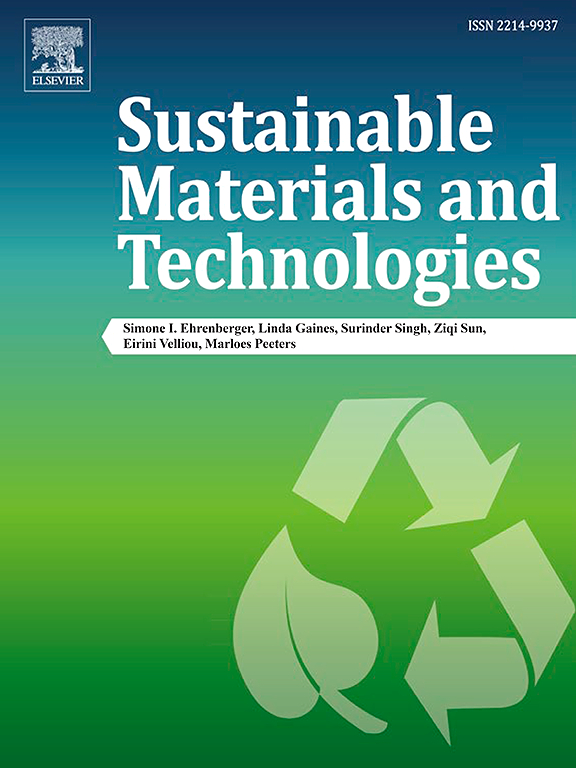Rapid, selective surface oxygenation of activated biochar via microwave-induced air oxidation shock toward organic pollutant adsorption and electrochemical energy storage
IF 8.6
2区 工程技术
Q1 ENERGY & FUELS
引用次数: 0
Abstract
Oxidation is a commonly used strategy to enhance the surface functionality of biochar. Disappointingly, oxidation always enriches high polarity poor-capacitance O-C=O groups (i.e., carboxyl/lactone) on the carbon material surface, which act as a double-edged sword for biochar's application in organic pollutant adsorption and electrochemical energy storage. Herein, microwave-induced air oxidation shock (MW-AOS) is proposed as a rapid and simple strategy to selectively oxygenate the surface of activated biochar (AB). Characterization results show that the surface of the pristine AB is remarkably oxygenated from 3.8 % to 11.8 % after MW-AOS at an output power of 800 W for 15 s. Interestingly, surface oxygenation is achieved while reducing the high-polarity poor-pseudocapacitance O-C=O groups (i.e., carboxyl/lactone) is selectively achieved at a shorter irradiation time (15 s). Batch adsorption results indicate that MW-AOS remarkably increases the adsorption of various organic pollutants (dyes and antibiotics) by AB. Electrochemical analysis reveals that the specific capacitance of the AB is improved by 250 % (from 60 to 208 F/g at 1 A/g after AOS at 800 W for 15 s), attributed to reduced electrical resistance and enhanced ion transport. Finally, this study could pave a new route for the surface engineering of AB for these applications.

微波诱导空气氧化冲击下活性生物炭快速、选择性表面氧化对有机污染物的吸附和电化学储能
氧化是增强生物炭表面功能的常用策略。令人失望的是,氧化总是会在碳材料表面富集极性高、电容差的 O-C=O 基团(即羧基/内酯),这对生物炭在有机污染物吸附和电化学储能方面的应用来说是一把双刃剑。本文提出微波诱导空气氧化冲击(MW-AOS)作为一种快速、简单的策略,对活性生物炭(AB)表面进行选择性充氧。表征结果表明,在输出功率为 800 瓦、时间为 15 秒的微波诱导空气氧化冲击条件下,原始 AB 表面的氧含量从 3.8% 显著提高到 11.8%。有趣的是,在较短的辐照时间(15 秒)内,表面氧含量提高的同时,还选择性地减少了高极性、伪电容差的 O-C=O 基团(即羧基/内酯)。批量吸附结果表明,MW-AOS 显著提高了 AB 对各种有机污染物(染料和抗生素)的吸附能力。电化学分析表明,由于电阻减小和离子传输增强,AB 的比电容提高了 250%(在 800 W 的 AOS 照射 15 秒后,1 A/g 的比电容从 60 F/g 提高到 208 F/g)。最后,这项研究为 AB 的表面工程应用铺平了一条新的道路。
本文章由计算机程序翻译,如有差异,请以英文原文为准。
求助全文
约1分钟内获得全文
求助全文
来源期刊

Sustainable Materials and Technologies
Energy-Renewable Energy, Sustainability and the Environment
CiteScore
13.40
自引率
4.20%
发文量
158
审稿时长
45 days
期刊介绍:
Sustainable Materials and Technologies (SM&T), an international, cross-disciplinary, fully open access journal published by Elsevier, focuses on original full-length research articles and reviews. It covers applied or fundamental science of nano-, micro-, meso-, and macro-scale aspects of materials and technologies for sustainable development. SM&T gives special attention to contributions that bridge the knowledge gap between materials and system designs.
 求助内容:
求助内容: 应助结果提醒方式:
应助结果提醒方式:


